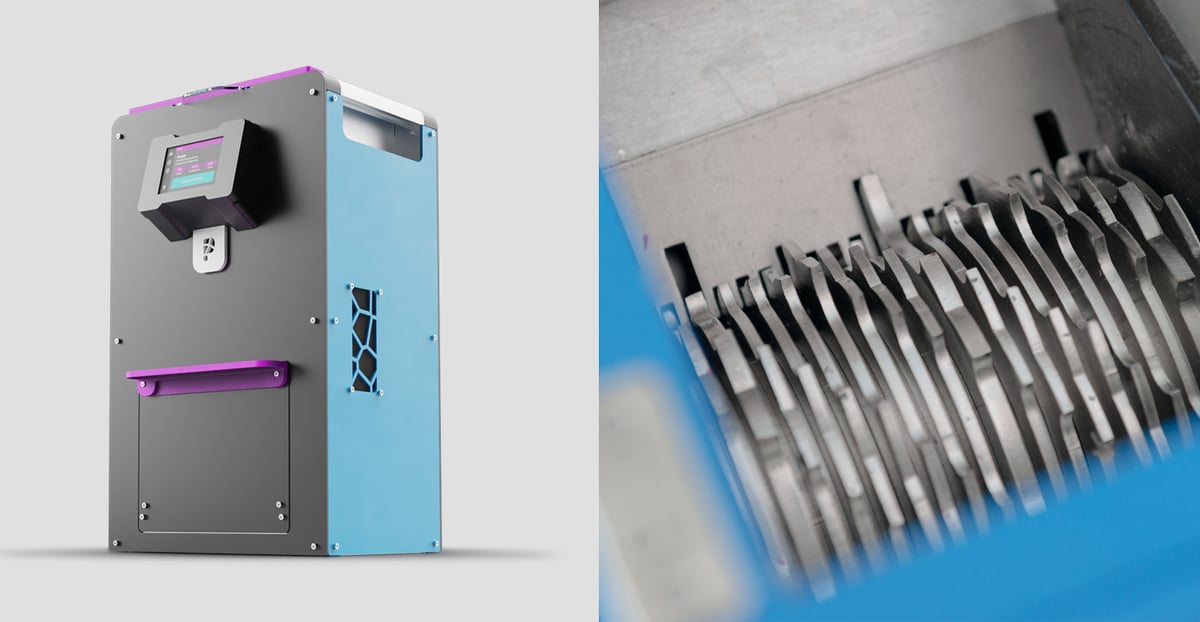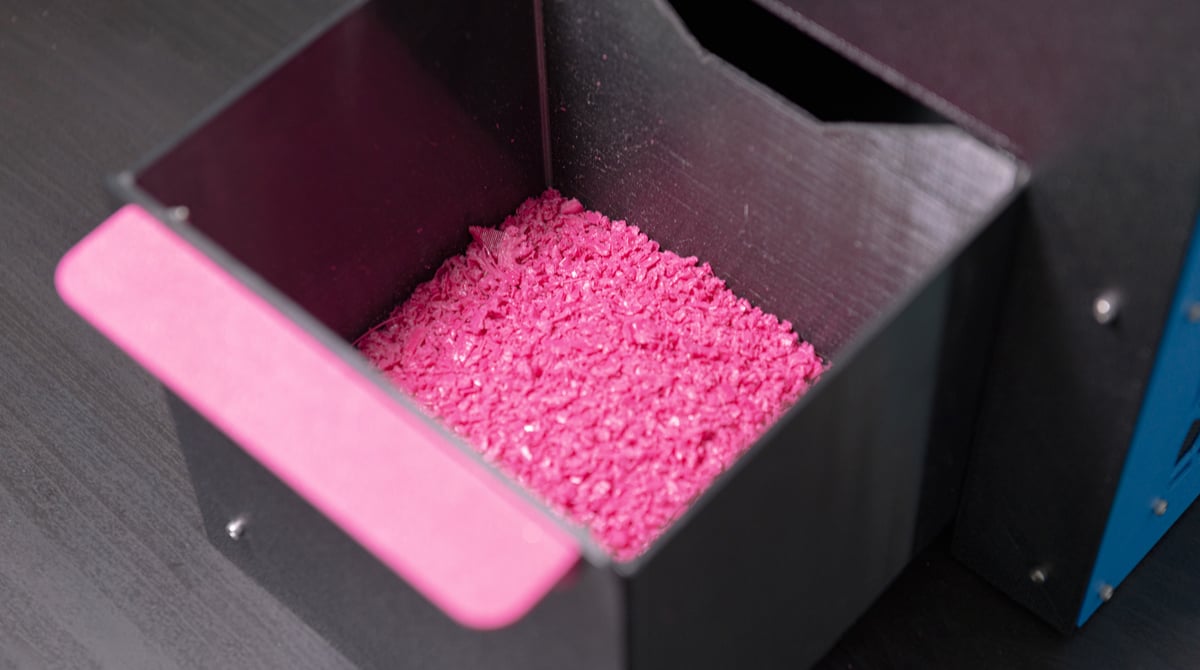Print. Shred. Melt. Form. Repeat. This is the recipe for more sustainable 3D printing, according to Polystruder, a Los Angeles-based start-up launching a new suite of machines that will shred your 3D prints and then melt and form them into new filaments.
“Our vision is to enable plastic waste to be recycled at the source, preventing it from even reaching the trash bin,” says company founder Ali Sureyya Torun. “By implementing our four-machine package and embracing recycling practices, we can make a significant contribution towards minimizing plastic waste and its impact on the environment.”
Torun estimates that shredding parts and recycling them into new filament can help reduce overall 3D printing plastic waste by at least 50%. When it comes to cost savings, depending on the quantity and type of plastic, as well as the amount of waste generated, a manufacturer using expensive materials could experience cost savings three to five times cheaper than purchasing filament externally, says Torun. For PLA, the savings can range between 40% to 70%.

The Polystruder is not just for recycling. It can also manufacture filament from raw bulk plastics. In such cases, the cost savings can be even higher. For example, the cost of each kilogram of PLA can be as low as $5, so making your own filament from bulk plastic, like filament manufacturers do, can lead to dramatic savings over time.
The Polystruder GR Pro is the plastic shredder component and the first of the four machines to become available. The unit can detect material properties and automatically adjust the motor shred speed and power. It also features an “ultra-quiet” 300W brushless DC motor with a 90:1 gear ratio, delivering 40Nm of crushing power. This means it can make shreds out of virtually any plastic, says Torun, including PC, ASA, nylon, TPU, and some engineering-class materials like PEEK and PEI.
The Polystruder GR Pro can also shred beverage bottles and other post-consumer waste without issues, so you can start making filament out of your recyclables. The GR Pro can also process composite-based materials like carbon fiber and wood, but Torun says this can reduce the blade’s lifespan. Hardened carbon steel blades specifically designed for composite plastics are in the works.
Speaking of blades, the Polystruder GR Pro has 19 stainless steel double-sided blades, which reduces shredding time and maintenance costs, the company says. Shredding time is about 30 minutes per 1kg of material. With three different blade profiles, including large, medium, and small blades, the Polystruder GR Pro can handle thick materials and solid 3D printed plastic objects up to 25mm. There’s a 3-liter hopper and a 4.5-liter collector bin.

Processing Your Shreds
Once you have your shreds, you can use the Polystruder filament maker machines, the extruder (XR Pro), the cooler (CR Pro), and the spooler (SP Pro), to recycle your material into filament or you can use your shreds directly with any 3D printer that prints with shreds or pellets.
Torun recommends processing the materials at least twice to achieve a more granular pellet size (between 3mm to 5mm) when printing in a pellet 3D printer.
The Polystruder extruder unit can make 1.5kg of filament per hour and has a 450ºC optional extruder module available for engineering-grade materials. The filament cooler features an uninterrupted cooling path for even cooling, and the spooler neatly spools 2kg of material. The company had offered a filament maker in the past but is revamping the machines from scratch.

Polystruder’s shredder ($1,999) is available to pre-order now, and the company will begin taking pre-orders for the other three units in Q4, with estimated delivery in late Q1 2024. Once available, Torun says the four-unit systems will sell for about $4,500.
Target customers are anyone who owns 3D printing farms, such as at universities, print-on-demand services, or small to medium-scale industries. But there are also potential customers who may be interested in selling recycled filament made from a particular source, such as ocean plastic or local trash.
“By recycling plastic waste and producing high-quality filament, companies can contribute to the circular economy by offering recycled filament to the market,” says Torun. “Therefore, businesses focusing on the production and sale of recycled filament can also find our machines beneficial for their operations.”
License: The text of "New Suite of Machines to Recycle 3D Prints Back into Filament, Under $5K" by All3DP Pro is licensed under a Creative Commons Attribution 4.0 International License.

